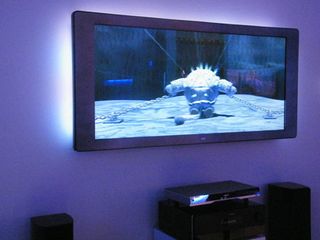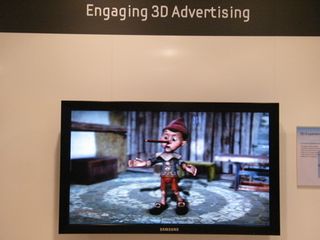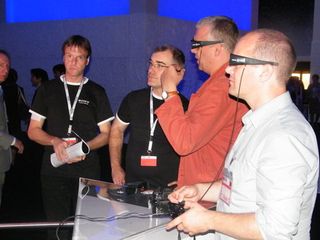Is 3D really the future of home cinema?
The story behind IFA's 3D announcements
Sony's main rival in the active shutter field is Panasonic, who has created something called Full HD 3D, which works in a similar way. Its version, however, uses NeoPDP plasma technology which Panasonic is claiming makes its 3D images the clearest available.
This is all very well but Panasonic didn't actually show off any new 3D TVs at IFA, instead it wheeled out the same technology seen at CES – a 103-inch 3D-enabled plasma screen. The company also pledged allegiance once again to the format and promised TV sets to come to market in 2010.
Both companies will be waiting with bated breath to hear what the BDA will announce as the standard for 3D on Blu-ray come December. Once an agreement is made, they will be quick to manufacture TVs and Blu-ray machines that are 3D-enabled.
Other companies are a little more restrained in their 3D plight. At IFA this year, Philips showed off a prototype 3D version of its 21:9 Cinema television. Using passive stereoscopic glasses, the company simply put a polarising filter in front of the panel.

21:9 TIME: Philips shows off perfect cinema ratio in 3D
The footage shown was impressive, with the images more like what 3D consumers are used to, with objects appearing to jump out of the TV.
Although Philips has already treaded 3D water with an autostereoscopic display (no glasses needed) a few years back, the company actually closed down its 3D research arm earlier this year.
Get daily insight, inspiration and deals in your inbox
Get the hottest deals available in your inbox plus news, reviews, opinion, analysis and more from the TechRadar team.
In the Philips press conference, though, a spokesperson did reveal that the company was looking at all aspects of the technology, but weren't going to make a firm commitment, explaining: "It's not clear yet whether consumers are ready to wear glasses or not wear glasses. When the market is ready, we will deliver a proper announcement."
Other companies who showed off 3D were JVC, who also opted for stereoscopic glasses, and Samsung who showed off its 3D monitor range and a rather impressive autostereoscopic display which the company is to use for advertising purposes.

AD SENSE: Samsung shows off 3D advertising
Watching the no-glasses technology, though, it's pretty obvious why this will never hit homes, as you have to be in a very precise area of the room to watch the 3D image – not great then for group viewing.
Regardless of what technology is used to bring 3D to the home, as with everything, content is king and it's certainly been a busy time for 3D in cinemas.
With the likes of Disney Pixar's UP and Avatar yet to arrive on screens, it will be these big movies which will make or break consumers' thirst for 3D technology in the home by 2010.
Even if they win big in the cinema, however, manufacturers of 3D televisions are being extremely short-sighted if they think that 3D in the home will be an instant success.
If consumers are to embrace the technology, it is inevitable that your TVs are going to have be replaced, as will your Blu-ray players. Such a big AV clear-out like this doesn't happen very often, and most people are still trying to catch-up with the HD revolution.
There is a ray of light, however, on the 3D horizon, which may mean the success of the format in the home, and it comes from the videogames market.

GAME ON: 3D gaming could be the format's saviour
Putting on a pair of glasses as a gamer is as easy as strumming a fake, plastic guitar. Peripherals and gimmicks thrive in the gaming market and 3D will fit right in.
And, hopefully, like what happened with Blu-ray, games machines such as the PS3 and PC gaming will pave the way for movies in 3D in the home. Because if you are ready to kit out your home-entertainment system to cater to your 3D gaming needs, then watching movies in the format will come that little bit easier.
In the end, with 3D being the big story at IFA this year, it showed something of a lack of innovation at the show. The format has been in and out of favour with the cinema-going public for the last 70 or so years. It didn't work particularly well then, so why should it now?
Marc Chacksfield is the Editor In Chief, Shortlist.com at DC Thomson. He started out life as a movie writer for numerous (now defunct) magazines and soon found himself online - editing a gaggle of gadget sites, including TechRadar, Digital Camera World and Tom's Guide UK. At Shortlist you'll find him mostly writing about movies and tech, so no change there then.

